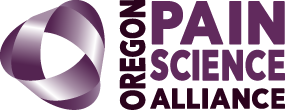Resource Elements
- An instructor of resident physicians is led by his student to an understanding of pain that revolutionized his own practice.
- Two stories of his patients who grasped new concepts of the relationship between pain and stress, and quickly resolved their stress related pain.
- Not all patients are able to grasp new pain concepts.
- An offer of his experience as a resource for other clinicians.
-
- Instructor for Resident Physicians is intrigued by a Resident’s description of recent science insights about the mechanism of pain, so he tags along and gains a new understanding of pain that changed his practices and his relationships with his patients.
- He now first does due diligence to eliminate a disease/injury cause for pain, then explores causes related to stress and prior trauma.
- He describes two case examples where no disease cause was determined, and the pain was resolved when the patient understood how their body was protecting them from perceived threat.
- He is willing to be a resource to other physicians.
My emerging understanding of pain is that it’s something our body creates to protect us from potential damage rather than a symptom of disease to be diagnosed. Pain has a memory in our bodies and when our environment feels unsafe, we can start experiencing pain in various parts of our bodies. Pain is fluid, fixable, and changeable.
Everything I’ve seen and read and observed in my patients’ responses and statements teach me. It’s understandable that people develop really negative relationships with their pain because it is an unpleasant experience. As a clinician I do my due diligence to make sure there is not a disease that is causing pain as a symptom. Understanding pain changes my understanding of obesity, mental health disorders and the effects of adverse childhood events throughout the lifespan and how important it is to help patients understand that.
He describes two examples of positive patient encounters:
“John”- a man in his late 30’s, was experiencing such severe back pain that in the past, I would have thought he needed surgery by a specialist and his life would be dramatically different. Instead, I asked to understand his story of early life trauma and pain. My pain science explanation made immediate sense to John, so he planned to talk about it with his therapist. The next time I saw him, he was back at work as a mechanic, spending time with his kids, doing things he enjoys.
“Bonnie”- a long-time patient who I would try to help understand how her pain might relate to some of her prior abuses and trauma. She hurt her ankle and was given standard care including x-ray, cat scan, and MRI. Her pain persisted and her ankle was turning colors and changing temperature. She was scared and made an appointment with me. I asked her if she thought her fear and uncertainty might be making the symptoms worse. She said, “absolutely.” We created a rehab plan designed to gradually increase her activity level over several weeks. Bonnie actually resumed her normal activities within a week or so!
He cites three of his mentors in pain science and offers.
The transcript for this video can be viewed as closed caption on YouTube. It can also be accessed via a 8-page PDF by clicking the link below.
Views: 919


